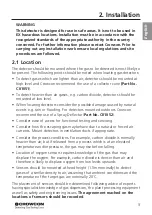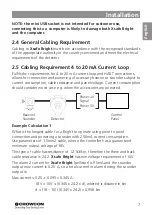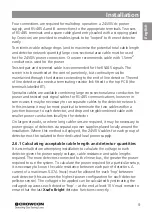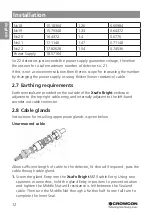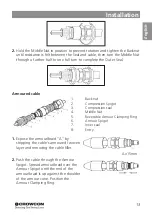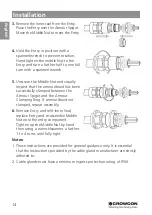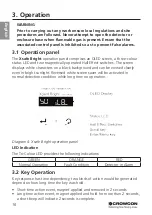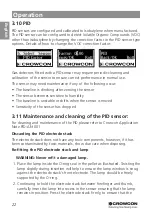
Installation
9
English
Four connections are required for multidrop operation: a 24V/0V dc power
supply, and RS-485 A and B connections to the appropriate terminals. Two sets
of RS-485 terminals and a spare cable gland entry (sealed with a stopping gland
by Crowcon) are provided to enable signals to be ‘looped’ to the next detector
easily.
To minimise cable voltage drops (and to maximise the potential total cable length
and detector network quantity) large cross-sectional area cable must be used
for the 24V/0V power connection. Crowcon recommends cable with 1.5mm
2
conductors is used for the power.
Twisted pair and screened cable is recommended for the RS485 signals. The
screen is to be earthed at the control panel only, but continuity must be
maintained through the detectors extending to the end of line detector. The end
of line detector also needs a terminating resistor link fitted to the top PCB (the
terminals labelled RT).
Specialist cables are available combining large cross-sectional area conductors for
power and twisted-pair signal cables for RS-485 communications, however in
some cases it may be necessary to run separate cables to the detector network.
In this instance it may be most practical to terminate the two cables within a
junction box near to each detector, and drop and single/combined cable with
smaller power conductors locally to the detector.
On large networks, or where long cable runs are required, it may be necessary to
power groups of detectors via separate power supplies placed locally around the
installation. Where this method is deployed, the 24V/0V cables for each group of
detector must be isolated to their dedicated local power supply.
2.6.1 Calculating acceptable cable length and detector quantities
It is essential before attempting installation to calculate the voltage to each
detector given the power supply voltage, cable resistance and cable lengths
required. The more detectors connected to the linear bus, the greater the power
required to run the system. To calculate the power required for a particular setup,
it is necessary to know the cable resistance between each pair of detectors. A
current of a maximum 0.07A (toxic) must be allowed for each ‘hop’ between
each detector (this assumes the highest power configuration for each detector:
pellistor sensor). The voltage to be applied can be calculated by estimating the
voltage drop across each detector ‘hop’ – at the end at least 10V must remain to
ensure that the last
Xsafe Bright
detector functions correctly.









